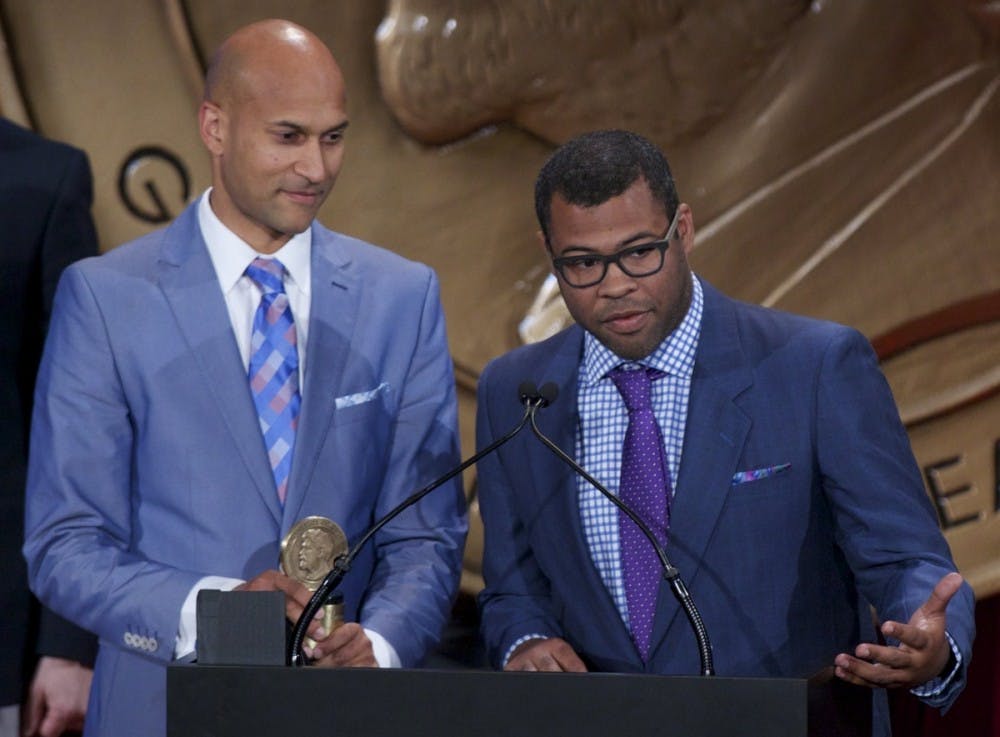On March 4, the Academy of Motion Pictures Arts and Sciences presented the 90th Academy Awards. The ceremony, often referred to as the Oscars, was hosted this year by talk show host Jimmy Kimmel. There were no shocking moments like last year’s Best Picture mix-up between “La La Land” and “Moonlight”. However, it is clear that the Academy remains in the shadow of the #OscarsSoWhite controversy of 2015. The hashtag started off as a joke on Twitter, but users also used it to discuss the serious lack of diversity in the awards’ nominations. The win for “Moonlight” last year was seen as a step in the right direction because it had a predominantly black cast and was the first LGBT-themed film to win Best Picture. This year’s ceremony was not explicitly political. There were many nods to recent movements, including the women of the #MeToo initiative and Dreamers, throughout the night. These steps are important, but the very racial and gender makeup of the Academy remains the same, and that is what’s blocking true diversity.
An understanding of the history of the Academy reveals why the organization has issues with diversity. The Academy Awards began in 1929 at a dinner party with an attendance of around 250 people. The Oscars was adopted as the nickname in 1939 and the awards’ recipients have been announced via live-broadcast since 1942. Active and lifetime members of the Academy of Motion Pictures Arts and Sciences, or the Academy for short, vote on all eligible films to determine nominations and the final winners. To become a member, an individual must be sponsored by a current member of their respective branch. There are 17 branches, including acting, directing and costume design, and each have their own rules — in addition to the larger rules that members can only sponsor one candidate each per year. Candidates are screened by the Board of Governors and will receive an invitation if they are approved.
In January 2017, there were nearly 7,000 voting members of the Academy, and a 2012 study found that the majority of the voting members were white males with a median age of 62 years. It is very difficult to become a member and it is exactly this degree of exclusivity that started #OscarsSoWhite. In 2015, Twitter user April Reign started the hashtag after noting that the four major acting categories included no individuals of color. The Academy can’t fully acknowledge and appreciate the diversity in the film world if they themselves are not diverse.
The 2018 Academy Award nominees included a number of firsts in regards to racial and gender diversity. Mary J. Blige became the first person ever to earn nominations for acting and Best Original Song in the same year, and Yance Ford became the first transgender filmmaker ever nominated for an Academy Award. Jordan Peele became the fourth African-American to be nominated for Best Director for his satirical horror film, “Get Out”. The film gained immense popularity last year for addressing racism in America in an innovative and unexpected way.
Though very popular amongst new Academy voters, it was reported that many older members hadn’t even watched “Get Out” — some believing that is wasn’t “an Oscar film.” In an interview, one voter admitted to eliminating the film from all categories because they were bothered by the how the film “pulled the race card.” “Get Out” highlights how racism functions in America, but is set in the present day and not in a historical period like the eras of slavery or Jim Crow. Some didn’t believe the Academy had the guts to award such a controversial film, but if some members didn’t even take the time to see the film or rejected it because it made them uncomfortable, then the issue is much larger. Diversifying the Academy with people of color, women and other marginalized groups could change the conversation within that institution, allowing the stories of minorities to stay in the running for prestigious awards.
It would be completely unfair for films to receive nominations or win Oscars solely because they were written by, directed by or about a person of color, but that is not the purpose of #OscarsSoWhite. Users of the hashtag want to highlight the lack of diversity in Hollywood as a whole. The fact that “Moonlight” won Best Picture last year may signal a change within the Academy which could lead to more diverse picks and wins in the years to come. However, while there should be conversations about #OscarSoWhite, there should also be conversations about #HollywoodSoWhite and why there are so few films that tell the stories of minorities in the first place. Research shows that racial minorities and women constitute a low percentage of the film industry. For there to be diversity during awards season, there needs to be diversity in production as well. The Academy can only produce a diverse set of nominations with a diverse pool of candidates in the first place. To promote diversity in films, both the Academy and Hollywood at large need to undergo a serious transformation.
Zari Taylor is a Viewpoint writer for The Cavalier Daily. She can be reached at opinion@cavalierdaily.com.





